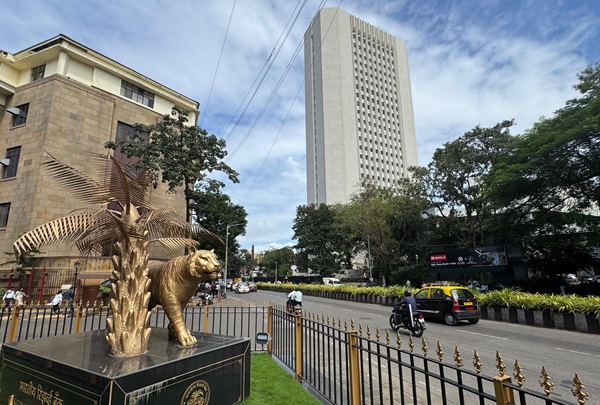.png)

Sridhar, a wealth management expert, balances investment strategy with his passion for books, cinema, and film critique.
February 11, 2025 at 4:57 AM IST
There will be no more issues of Sovereign Gold Bonds. That's what Finance Minister Nirmala Sitharaman said at a press briefing after announcing the Union Budget. What does it entail for investors seeking a financial alternative to gold as a strategic asset class? Do they have to return to the spot gold or gold Exchange Traded Funds or Gold Mutual funds – all of which appear sub-optimal to the SGBs?
When SGBs were introduced in 2015, everyone from the finance minister to portfolio managers to analysts hailed it as the greatest product innovation for Indians thirsting for gold. It had all the features of a blockbuster saving instrument: Sovereign guarantee (backed by the government), a price discount of 5%, exemption from tax on maturity if held for 8 years with early withdrawal facility from fifth year onwards, a sweetener of 2.75% interest per annum, later changed to 2.50% (akin to your bank paying you locker rent for storing your gold) and above all, an option to redeem at market price of gold on maturity.
Considering India’s insatiable appetite for gold, SGB fit the bill. Indian households allocate 15.2% to gold, the second-highest allocation after property, ahead of bank deposits (says a report by Jefferies). By keeping it in demat form and limiting to 500 grams subscription per person per financial year, the SGB scheme ticked many boxes at a time when India imports more gold and needed a financialised asset-class for gold – already provided by Gold ETFs and Gold Mutual Funds, inter alia.
Undoubtedly, SGBs became an instant hit because it had extra inducements over physical gold and gold ETFs in pricing, coupon interest payment and taxation (exempt on maturity). The first tranche on Nov 30, 2015, was issued at ₹2,684 per gram of gold held as a unit saw 913,571 grams subscribed. The issuance hit a peak in 2016-2017 with 17 series of subscription, which saw a total of 8.42 million grams subscribed. As of date, the total outstanding SGBs comprise 0.146 billion grams of gold of which roughly 10% got redeemed leaving an outstanding liability to the of 0.132 billion grams. Based on the price of gold in National Capital Region on Feb 10, 2025, the current liability for SGBs outstanding stands at ₹ 1,151.172 billion (Calculated at ₹8,721 per gram for 24 carats). That’s a staggering amount considering that the total issuance was done at a price of ₹ 681 billion so far. (calculated at the average weighted cost per issued gm outstanding)
The magnitude of this amount has come on the back of a rising trend in gold prices (up from ₹2,650 a gram issued in November 2015 to ₹ 8,721), rupee depreciation, economic uncertainty and geopolitical tensions.
For the retail investor, the results have been spectacular for those who completed the 8 years of lock-in. The first SGB (November 2015) gave a return of 128% in 8 years, and the run continues unabated so far (February 2016-141%, March-2016 -126%, August-2016-122%, September-2016- 139% and November-2016 – 159% return. These translate into a CAGR of 12.28-14.41% (the last series matured in November 2024).
All these suggest that the government had a rethink on what became a smash hit amongst retail investors and also speculators and arbitrageurs (big-ticket investors started cornering these in the secondary market whenever the government offered premature redemption window at specified prices).
The final nail came after last year’s budget. Economic Affairs Secretary, Ajay Seth admitted that the government has taken a hard look at SGBs after assessing the decision to raise borrowings from the market, and a view on the asset class. He said the government is not going to follow this path because the recent past experience has been a rather high-cost borrowing for the government. With that, the RBI also announced a premature redemption window for SGBs issued between May 2017 and March 2020. The last tranche of SGBs issued was in February 2024 at ₹6,263 per gram, after the Interim Budget.
Another factor that caused a rethink on SGBs could have been the reduction in basic customs duty on gold from 15% to 6% in the Union Budget 2024 which flared up gold imports by 104% in August 2024, to $10.06 billion. This also dented India’s need to contain physical gold imports and improve our trade deficit – which was the genesis behind SGB scheme in the first place.
What does it mean for the SGB Investor?
- Stay invested until the maturity. The proceeds will be tax-exempt.
- Encash the bonds during the premature redemption window offered by the RBI from time to time. The premiums are climbing up due to limited supply and no new issuances since February 2024. But premature redemption attracts capital gains tax.
- Consider the alternatives of a Gold ETF (returned 11.53% CAGR since March 8, 2007) or a Gold Mutual Fund (returned 10.87% CAGR over 10 years).
- Consider physical alternatives. Nothing beats the assuredness of a gold bar for a rainy day.




